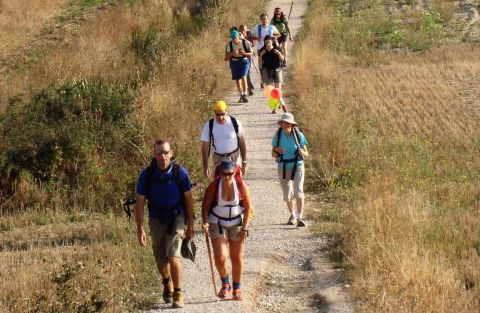El Camino, a spiritual journey through time
2024-12-09 14:37:20
In the heart of Spain lies a path that transcends mere footsteps; it is a journey that winds through rugged landscapes, ancient villages, and the depths of the human spirit. Welcome to El Camino de Santiago, the Way of St. James, a pilgrimage route that has beckoned travelers for centuries with promises of self-discovery, camaraderie, and profound spiritual awakening. Join us as we explore the transformative power of this timeless pilgrimage, where every step is a testament to the resilience of the human soul.

A Path Less Traveled: The Origins of El Camino
The history of El Camino de Santiago is as rich and varied as the landscapes it traverses. Dating back to the 9th century, the pilgrimage is named after St. James the Apostle, whose remains are said to be interred in the Cathedral of Santiago de Compostela in northwestern Spain. Over the centuries, pilgrims from all walks of life have made the arduous journey to pay homage to the saint and seek spiritual solace along the way.
The Routes: A Tapestry of Diversity
While there are numerous routes that lead to Santiago de Compostela, the most popular and well-known is the Camino Frances, which stretches nearly 800 kilometers from the French Pyrenees to the cathedral in Santiago. Along the way, pilgrims traverse a diverse landscape that encompasses rolling hills, lush forests, and quaint villages steeped in history.
For those seeking a quieter and more contemplative experience, there are alternative routes such as the Camino del Norte, which hugs the northern coast of Spain, or the Camino Portugues, which begins in Lisbon and winds its way through the Portuguese countryside before crossing into Spain.
The Pilgrims: A Tapestry of Humanity
One of the most remarkable aspects of El Camino is the diverse tapestry of humanity that it attracts. From seasoned hikers and devout pilgrims to curious travelers and spiritual seekers, the path welcomes all who are willing to embark on the journey with an open heart and mind. Along the way, pilgrims form bonds of friendship and camaraderie, united by a common purpose and a shared sense of awe at the beauty of the world around them.
The Journey: A Test of Body, Mind, and Spirit
Walking El Camino is not merely a physical endeavor; it is a test of endurance, resilience, and inner strength. Each day brings its own challenges blistered feet, sweltering heat, torrential rain but also moments of profound beauty and serenity. From the simple pleasure of a shared meal with fellow pilgrims to the quiet contemplation of a sunrise over the Spanish countryside, every step along the way is a reminder of the inherent beauty of life itself.
The Albergues: A Haven for Pilgrims
Throughout the journey, pilgrims are welcomed into a network of albergues, or pilgrim hostels, where they can rest their weary bodies and recharge their spirits. These simple accommodations offer a sense of community and camaraderie, as travelers from around the world come together to share stories, laughter, and the occasional blister remedy.
The Arrival: A Moment of Revelation
As pilgrims approach Santiago de Compostela, anticipation fills the air. The spires of the cathedral loom on the horizon, beckoning weary travelers with promises of rest and reflection. And when at last they reach the Plaza del Obradoiro, the sense of accomplishment is palpable a testament to the power of determination, faith, and the human spirit.
The Endless Pilgrimage: A Journey of the Soul
But for many pilgrims, the journey does not end with their arrival in Santiago. Instead, it becomes the first step on a lifelong pilgrimage a journey of self-discovery, growth, and transformation that continues long after they have returned home. For El Camino is not merely a path to a destination; it is a path to the soul, where every step is a reminder that the true journey lies within.
In a world filled with noise and distraction, El Camino offers a rare opportunity to slow down, unplug, and reconnect with what truly matters. It is a journey of the soul, where every step is a prayer, every breath a meditation, and every encounter a blessing. So pack your bags, lace up your boots, and embark on a pilgrimage of a lifetime for on El Camino, the journey is as important as the destination, and the true treasures are found not in the miles we travel, but in the moments we share along the way.













